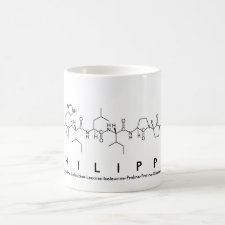
Authors: Lopez C, Claude B, Morin P, Max JP, Pena R, Ribet JP
Article Title: Synthesis and study of a molecularly imprinted polymer for the specific extraction of indole alkaloids from Catharanthus roseus extracts.
Publication date: 2011
Journal: Analytica Chimica Acta
Volume: 683
Issue: (2)
Page numbers: 198-205.
DOI: 10.1016/j.aca.2010.09.051
Alternative URL: http://www.sciencedirect.com/science/article/B6TF4-5161PDN-6/2/022ff660a11eb0643cf6f138e13584bc
Abstract: Two molecularly imprinted polymers (MIP) for catharanthine and vindoline have been synthesized in order to specifically extract these natural indole alkaloids from Catharanthus roseus by solid-phase extraction (SPE). Each MIP was prepared by thermal polymerisation using catharanthine (or vindoline) as template, methacrylic acid (or itaconic acid) as functional monomer, ethylene glycol dimethacrylate (EDMA) as cross-linking agent and acetonitrile (or acetone) as porogenic solvent. For catharanthine-MIP, a SPE protocol (ACN-AcOH 99/1 washing and MeOH-AcOH 90/10 elution) allows a good MIP/NIP selectivity (imprinting factor 12.6). The specificity of catharanthine-MIP versus related bisindole alkaloids was assessed by cross-reactivity study. The catharanthine-MIP specifically retained catharanthine and its N-oxide analogue but displayed a weak cross-reactivity for other Vinca alkaloids (vinorelbine, vincristine, vinblastine, vindoline, vinflunine). It appears that the catharanthine-like unit of these molecules are hardly trapped in catharanthine cavities located in the MIP, probably due to the sterical hindrance of the vindoline moiety. Finally, the MIP-SPE applied to C. roseus extract enabled quantitative recovery of catharanthine (101%) and the total removal of vindoline. Its capacity was determined and was equal to 2.43 μmol g-1. Vindoline is a weaker base than catharanthine, so the vindoline-MIP was achieved with a strong acidic monomer (itaconic acid) to increase vindoline-monomer interactions and a modified washing solvent (ACN-HCOOH 99/1) to reduce non-specific interactions. The influence of the amount of HCOOH (protic modifier) percolated during the washing step upon the elution yield and the imprinting factor for vindoline was investigated. This preliminary optimisation of the washing step, and in particular the number of moles of acid percolated, seems useful to emphasize the use of MIP in conditions of high selectivity or high yield. A compromise was obtained with an imprinting factor equal to 7.6 and an elution recovery of 33%. However MIP-vindoline failed to achieve a specific extraction of vindoline since catharanthine was also extracted probably because of strong non-specific interactions occurring between catharanthine and the sorbent
Template and target information: catharanthine, vindoline
Author keywords: molecularly imprinted polymer, Indole alkaloids, Catharanthus roseus, Catharanthine, Vindoline, Solid-phase extraction, Plant extract, Imprinting factor



Join the Society for Molecular Imprinting

New items RSS feed
Sign-up for e-mail updates:
Choose between receiving an occasional newsletter or more frequent e-mail alerts.
Click here to go to the sign-up page.
Is your name elemental or peptidic? Enter your name and find out by clicking either of the buttons below!
Other products you may like:
 MIPdatabase
MIPdatabase









